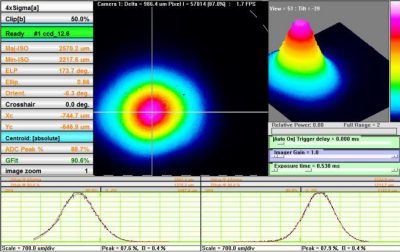Femtosecond laser for linear electron accelerators
Femtosecond lasers, i.e. lasers with pulse duration of less than 1ps (1ps=10-12 s) belong to the most exciting kind of lasers and have nowadays become applied tools in science, medicine and industry. Particle acceleration is one of the areas where application of femtosecond lasers has led to significant progress. Namely, using ultra short pulses for photoemission adds a new dimension in controlling the high-energy electron bunches and opens up new concepts in electron acceleration with unique potential applications.
In this practical work, you will perform measurements of ultra-short pulse lasers using the output of the laser system of the AREAL linac, which provides pulse sources with variable parameters like wavelength, energy/power, repetition rate, and pulse duration. You will get an insight into the features of femtosecond lasers applied specifically in electron acceleration and will learn how to operate and configure the system during/for a running linac facility.
The main experimental task is devoted to pulse width (duration) measurement. The specifics of this task is that, in contrast to the case of nanosecond or longer pulses, there are no currently available sensing devices which would allow to register directly the optical pulses of picosecond duration or less. One of the indirect techniques to handle this is the method of optical autocorrelation which is based on registering the second harmonic signal using a Michelson interferometry setup. You will learn the basic theory behind this method in parallel with practical installation and operation of the optical setup.
As an outcome of this work, you will get an experience of work in an optical laboratory and will acquire practical skills in optical alignment and measurements using a number of optical and optoelectronic devices. Finally, in a group with other students and more experienced staff, you will participate and assist in a real experiment on the accelerator facility where you will apply your newly acquired skills and knowledge. Namely, by changing the pulse duration of the laser, you will observe its effect on the energy spread of the accelerated electron bunches.


